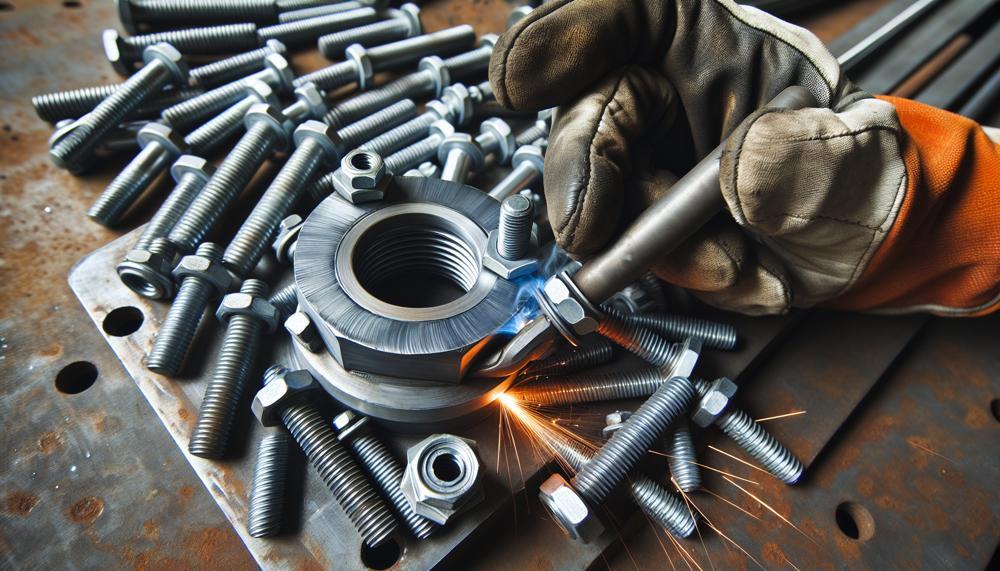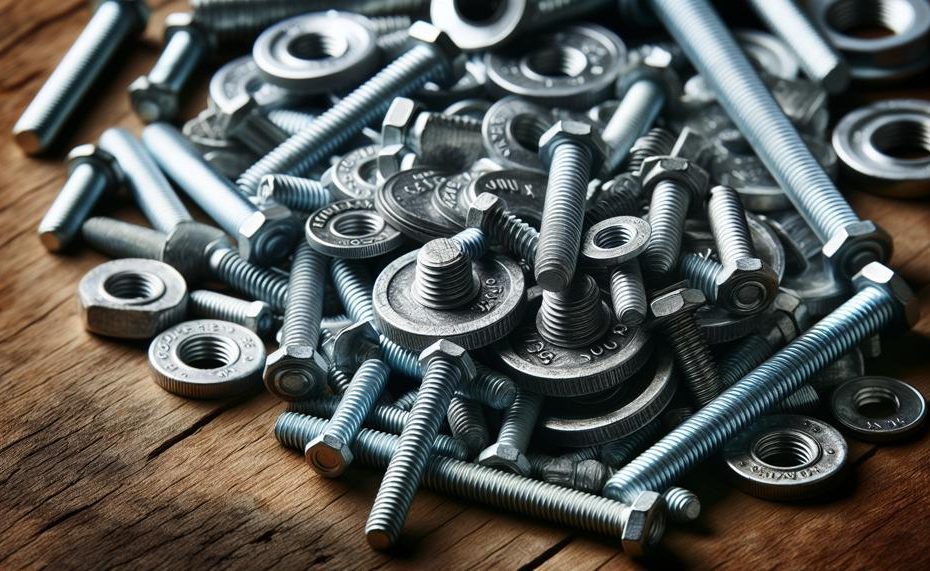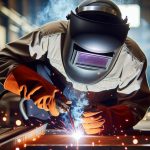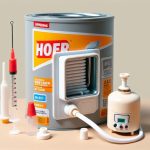Are you tired of the same old welding methods that leave behind unsightly marks and weaken the bond between metal pieces? Are you in search of a more efficient and effective way to join two pieces of metal together? Welding with zinc bolts may just be the solution you’ve been seeking.
In this blog post, we’ll delve into the world of welding with zinc bolts and discover why they are becoming increasingly popular among welders. We’ll cover everything from what exactly zinc bolts are and their benefits for welding, to tips and tricks for successful usage, common mistakes to avoid, and important safety precautions.

So, can you weld zinc bolts?
Yes, you can weld zinc bolts. Oxy-acetylene is recommended because it works at a lower temperature than other welding gases, and zinc requires lower temperatures than other metals.
So whether you’re a novice or an experienced welder, this post will provide valuable insights on incorporating zinc bolts into your projects. So put on your gear and let’s explore the fascinating world of welding with zinc bolts.
Contents
- 1 The Difference Between Galvanized And Zinc Plated Steels
- 2 Galvanized Steeel Melting Point
- 3 Is Galvanized Steel Toxic?
- 4 How Is Welding Galvanized Steel Different From Welding Regular Steel?
- 5 How To Weld Galvanized Steel Properly
- 6 How To Protect Galvanized Steel From Corroding After Welding?
- 7 Zinc Poisoning Signs
- 8 Conclusion
The Difference Between Galvanized And Zinc Plated Steels
Galvanized and zinc plated steels may seem similar, but their coating methods make a significant difference. While galvanization involves dipping steel into molten zinc, zinc plating uses an electroplating process to apply a thinner layer of zinc on the surface. This variance in thickness and bonding can greatly impact weldability.
In galvanized steel, the zinc coating is thicker and more durable (2-4 mils), providing better resistance against high welding temperatures. The zinc acts as a shield, protecting the steel from melting or weakening during the welding process. However, this process produces toxic fumes due to the presence of zinc, which can be harmful if inhaled. Proper ventilation and temperature control are necessary to prevent zinc poisoning.
On the other hand, zinc plated steel has a thinner layer of zinc (0.5-2 mils), making it easier to control the amount applied and resulting in a smoother surface.
However, this thinner layer may not provide adequate protection against high welding temperatures, making it more prone to melting or weakening. Thus, it is crucial to remove the zinc coating before welding galvanized steel to avoid inhaling toxic fumes and ensure a strong weld.
Galvanized Steeel Melting Point
The melting point of galvanized steel, specifically the zinc coating used on it, is a vital factor to consider when welding. Unlike the underlying steel, which has a melting point of around 1370-1530 degrees Celsius (2500-2790 degrees Fahrenheit), the zinc coating’s melting point is much lower at approximately 419 degrees Celsius (786 degrees Fahrenheit). This difference in melting points poses challenges when welding zinc bolts.
When exposed to temperatures above 419 degrees Celsius, the zinc coating will melt, leaving the steel vulnerable to rust and corrosion.
Therefore, welders must take precautions to avoid reaching this temperature and causing damage to the material. One way to do this is by using proper ventilation and protective equipment to avoid inhaling toxic fumes released when the zinc coating melts and vaporizes.
Is Galvanized Steel Toxic?
When it comes to preventing rust and corrosion, welding zinc bolts on galvanized steel is a popular choice due to its long-term effectiveness and cost-efficiency.
However, it is essential to take the necessary precautions and follow proper techniques to ensure safety and maintain the strength of the project.
| To ensure safety and success, here are some important precautions: | Recommended techniques for successful welding: | Valuable tips to keep in mind: |
| – Work in a well-ventilated area or use a fume extractor to prevent exposure to harmful zinc fumes. | – Consider the composition and thickness of the steel when choosing suitable materials for welding. | – Before welding, remove the zinc coating through methods such as sanding or using specialized products. |
| – Always wear protective gear when handling welding equipment. | – Preheat the steel to 100-150 degrees Fahrenheit to prevent damage to the zinc coating and improve weld quality. | – Store equipment in a well-ventilated area until they have cooled down to avoid potential hazards. |
| – Understand the melting points of zinc and steel to ensure a strong bond without compromising safety. |
Proper ventilation is crucial when welding zinc bolts on galvanized steel as the process produces toxic zinc fumes that can be harmful if inhaled. Therefore, it is essential to work in a well-ventilated area or use a fume extractor to prevent exposure.
Using suitable materials is also crucial for a successful weld. The composition of the steel should be considered, as well as the thickness of the zinc coating. Thinner coatings are easier to weld, while thicker coatings may require removal before welding.
Removing the zinc coating before welding is vital to ensure a strong bond without compromising safety. This can be done through methods such as sanding or grinding, or by using specialized products designed for this purpose.
Preheating the steel can also help prevent damage to the zinc coating and improve weld quality. It is recommended to preheat the steel to 100-150 degrees Fahrenheit before welding.
Lastly, proper storage of equipment is essential to prevent any potential hazards. Zinc fumes can still be present on the welding equipment, so it is crucial to store them in a well-ventilated area until they have cooled down.
How Is Welding Galvanized Steel Different From Welding Regular Steel?
When it comes to welding zinc bolts, there are notable differences in the welding process between galvanized steel and regular steel that can significantly impact the outcome. These differences primarily stem from the presence of a protective zinc coating on galvanized steel, which can pose challenges during the welding process.
One of the main differences is that galvanized steel requires the removal of its zinc coating before welding. This is because the coating can cause problems such as porosity and spatter, which can compromise the quality and strength of the welds. However, care must be taken to choose a removal method that does not damage the base steel.
Additionally, welding galvanized steel also poses potential fume hazards as it produces zinc oxide fumes when heated. To ensure safety, proper ventilation and protective gear such as respirators should be used during the welding process. Working in a well-ventilated area is also recommended to minimize exposure to these harmful fumes.
Another complication with welding galvanized steel is that galvanizing after welding can result in an uneven surface due to potential reactions between the zinc coating and heat from the welding process. This can affect the overall strength and appearance of the project. In contrast, galvanizing before welding is generally considered more effective as it results in smoother surfaces and reduces the risk of complications.
How To Weld Galvanized Steel Properly
Properly welding galvanized steel requires a specific process and necessary precautions to avoid potential hazards. To ensure safe and successful welds, follow these essential steps and precautions:
- Prepare the surface: Get the surface of the galvanized steel ready before beginning the welding process by removing the zinc coating. This can be achieved through mechanical methods, like grinding or sanding, or by using a specific solution designed for zinc removal.
- Ensure proper ventilation: Welding galvanized steel can release hazardous fumes, so it is crucial to have adequate ventilation in the workspace. Working in a well-ventilated area or using exhaust fans can help prevent inhalation of these harmful fumes.
- Wear protective gear: Protect yourself from fumes and sparks by wearing appropriate safety gear when welding galvanized steel. This includes a welding helmet, gloves, and a long-sleeved shirt.
- Choose the right welding rod and gas mixture: Using the correct welding rod and gas mixture is vital for successful welds on galvanized steel. It is recommended to use a low-hydrogen welding rod with a 100% carbon dioxide gas mixture.
- Perform regular maintenance: After welding, regularly maintain and care for the galvanized product to prevent corrosion and extend its lifespan. This can involve applying a sealant or paint to protect the exposed steel from rust.
How To Protect Galvanized Steel From Corroding After Welding?
To ensure the long-term protection of galvanized steel after welding with zinc bolts, it is crucial to follow certain key measures. These include thorough design considerations, adherence to industry standards and guidelines, and the implementation of additional protective measures like powder coating.
- Design Considerations: When working with galvanized steel, careful attention should be paid to factors such as proper venting and drainage to avoid any explosions in the galvanizing kettle. It is also essential to avoid tight radii to prevent potential concerns like liquid metal assisted cracking and corner cracking.
- Industry Standards and Guidelines: To ensure the best practices for designing and fabricating galvanized steel, it is recommended to follow established standards such as ASTM A38The American Galvanizers Association (AGA) also offers helpful resources like their “Zinc and Dissimilar Metals in Contact” guide to assess the risk of galvanic corrosion on a project.
- Additional Protective Measures: In certain cases, incorporating additional protective measures like powder coating can not only enhance the aesthetic appeal but also provide extra protection against corrosion. This approach was successfully implemented in the Salvador Dali Museum project where galvanized HSS members were powder coated for added durability.
By diligently following these methods, engineers and specifiers can effectively safeguard galvanized steel from corrosion after welding with zinc bolts.
Zinc Poisoning Signs
The indications and manifestations of zinc poisoning in individuals are widespread and can affect various body systems.
These include gastrointestinal problems, a metallic taste in the mouth, flu-like symptoms, skin irritation, fatigue, respiratory issues, and potential organ damage.
If you suspect high levels of zinc exposure, it is crucial to seek medical help immediately to avoid serious complications.
In addition to physical symptoms, there are also psychological effects associated with zinc poisoning. Studies have shown that high levels of zinc in the body can lead to depression and anxiety. These mental health issues can severely impact an individual’s quality of life and should not be taken lightly.
Also Read: Can You Use A Regular Welder For Aluminum?
Conclusion
In conclusion, zinc bolts are a game-changing tool for welding metal pieces together.
Not only do they provide a strong and secure bond, but they also prevent unsightly marks on the surface of the metal. This article has delved into the benefits of using zinc bolts for welding, as well as important safety precautions and techniques for successful usage.
We have also discussed the differences between galvanized and zinc plated steels, emphasizing the importance of understanding their melting points to avoid damage during welding. Furthermore, we have highlighted the signs of zinc poisoning and stressed the need for seeking medical attention if exposed to high levels of zinc.





